Taiwan’s parliament became embroiled in a physical standoff on Monday against the backdrop of disagreement on ideological and geopolitical issues. After a temporary hall siege, lawmakers from the ruling pro-American Democratic Progressive Party (DPP) broke through the barricades erected by the main opposition Kuomintang (KMT), which occupied the hall to protest against government “tyranny”.
The conflict is not limited to internal contradictions but is also one of the manifestations of the global confrontation between the US and China on the world stage.
The Night Confrontation
More than 20 lawmakers occupied Parliament on Monday night, blocking the entrance to the main chamber with chains and chairs, saying the government was trying to impose its will and demanding the recall of former political dissident Chen Chu, who had made a significant contribution to the pro-American turnaround in Taiwan.
The KMT said it was protesting the DPP and President Tsai Ing-wen’s forcing through bills and Tsai’s nomination of her senior aide Chen Chu to head the Control Yuan, an independent government watchdog, calling Tsai’s government “more tyrannical than before”.
“This year, the Tsai administration has become more tyrannical than before,” the KMT said in a statement. “Tsai’s obstinacy had left the KMT with no alternative but to occupy the Legislative Yuan for a parliamentary boycott.”
Late Monday morning, DPP legislators pulled down the barricades and broke through. They complained about damage to the building from CMT members, including graffiti and locked doors.
The KMT in the 20th century
The KMT party, formed in accordance with the legendary Sun Yatsen’s ideology, was originally nationalist and claimed power throughout China. It was formed after the 1911 Xinhai Revolution and fought for a long time against the Beiyan group and Chinese Communists, until its defeat in 1949 and the latter’s victory.
After the civil war, the KMT fled to Taiwan without recognizing China’s legitimacy. The Kuomintang established Taipei as the temporary capital there.
The apple of discord is Chen Chu.
What is the famous Chen Chu, who started the confrontation in parliament? In the 1980s, she was imprisoned for six years for anti-government provocations when the KMT was in power.
She was one of the “Kaohsiung Eight,” prominent dissidents arrested after the 1979 Kaohsiung incident.
The Kaohsiung Incident (also known as the Formosa Incident) was a turning point when pro-Western forces provocatively provoked Taiwan’s open separatism from China. The incident occurred when Formosa magazine, led by Shih Ming-teh and Huang Hsin-chieh, as well as other opposition politicians, held a demonstration to mark Human Rights Day to promote and demand democracy in Taiwan.
On December 9, 1979, the Kaohsiung branch of Formosa Magazine dispatched two campaign wagons to broadcast the “Human Rights Forum”. The wagons were detained by the police, and two volunteers were arrested and beaten, formally leading to “popular protests”.
As a result, a “human rights day” event was held on the island on December 10, 1979. Almost all Taiwanese opposition leaders were arrested for provocation and destabilization of the political situation.
The next decade after the incident was the media coverage of the confrontation between KMT and the opposition.
Chen Chu was just one of the symbolic names of the time, but it was important. Of course, it wasn’t a coincidence that Chen Chu was chosen. After the active efforts of the US, Taiwan moved from a one-party model to a more “democratic” one and the Taiwanese politician returned to the arena as the mayor of Kaohsiung in the period from 2006 to 2018. Now she has been returned to the center of Taiwanese politics as a symbolic break from Beijing.
Is the KMT “pro-Chinese”?
The deeper causes of the conflict lie on the cultural and geopolitical plane. The KMT is not an overt “pro-Chinese agent” or “supporter” of mainland China – but the main feature of the party is antiseparatism. The Kuomintang thinks of Taiwan is part of China, as do the Chinese authorities, although both sides differ on the legitimacy of the formation of the People’s Republic of China. From the Kuomintang’s point of view, Taiwan is home to the legitimate Chinese government.
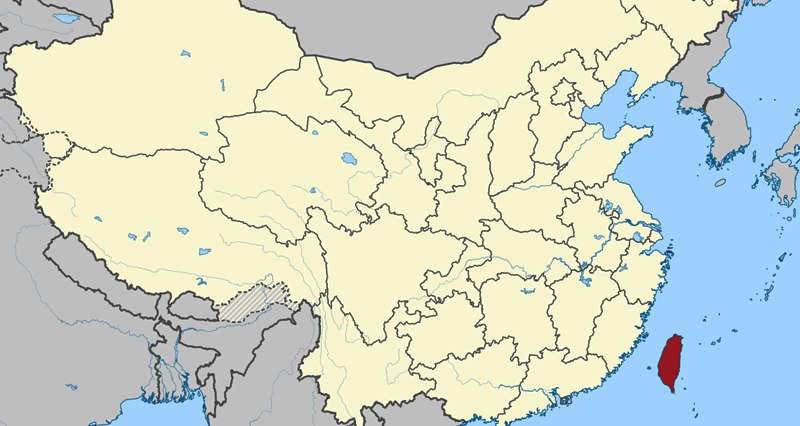
Initially, the conflict between Taiwan and China was an intra-Chinese political conflict, when one of the participants in the civil war managed to gain a foothold on the outskirts of the territory, still claiming power throughout the country. However, separatist forces such as the DPP seek to consolidate Taiwan’s de facto separation from China by advocating the establishment of a state on the island that does not claim to be part of China.
On September 30, 2007, the DPP pronounced for a separate identity from China and called for the enactment of a new constitution for a “normal nation”.
In the DPP and Western mainstream media, the Kuomintang party is invariably called “pro-China” or “Pro-Beijing”, but this is incorrect. The very history of the KMT would contradict the alliance with the Communist Party, given that after the civil war the KMT retreated to Taiwan. Although Premier Su Tseng-chang accused the Kuomintang of supporting the “one country, two systems” system, the KMT party itself rejects the “red line”: for example, the new KMT chairman Johnny Chiang said it was “standard DPP trickery” to call the party “red” (referring to the colors of the Communist Party of China), and that Chan himself has repeatedly expressed his disagreement with “one country, two systems”.
As for the electorate, among Taiwan’s ethnic groups, the KMT does indeed have stronger support among mainland Chinese and their descendants, for ideological reasons, as well as among Taiwanese aboriginals. In general, KMT support tends to be stronger in the Taiwanese areas, where the majority of the population speaks Hakka and Mandarin, in contrast to the southwestern areas, where the majority of the population is Hokken, who tend to support the DPP.
One of the brightest stories in June 2020 was the dismissal of Han Kuo-yu, another candidate for the post of Taiwan’s head – from the post of Kaohsiung Mayor. Kaohsiung, a long-time DPP stronghold, elected Han in 2018 after promising to revive what he called a stagnant economy. But according to the voting results on June 6, 900,000 residents of Kaohsiung considered that Han is not suitable for the position of mayor, and he resigned from office – it was at that moment they talked about “weakening” the position of China in Taiwan. It was Han who advocated warming relations with Beijing in terms of security (as in the case of Hong Kong, where a law on security was adopted). But at the moment Han lost, the party (like Johnny Chiang, the new KMT leader) re-emphasized the anti-communist line, as if “disavowing” this image.
Thus, today it is more correct to speak about the pragmatism of the KMT, which is closer to China on certain issues, which is now being disowned, but everything is mainly connected with electoral processes. But as the territory is historically Chinese, the question about China and potential “Hong Kong system” inevitably resurfaces again and again.
Anti-Chinese lever
China rightfully considers Taiwan its territory. As far back as the 12th century, Taiwan was officially included as part of China as part of Fujian Province, and only in recent decades the island has become a “disputed” territory with which only about 15 states maintain official relations.
Beijing stresses that Taiwan’s DPP authorities have recently intensified collusion with outside forces to undermine peace and stability across the strait through constant provocations of confrontation between the mainland and Taiwan, making relations across the strait even more complicated and difficult.
Targeted anti-Chinese policies are now in place, for example, the authorities have recently prevented students and children with parents from returning to the island to pursue their studies or reunite with their families.
These are painful issues that regularly come up in the media.
Recently Zhu Fenglian, spokesperson for the State Council of Taiwan Affairs Office (administrative agency of the People’s Republic of China), criticized Su Tseng-chang, chief of Taiwan’s executive body, as a separatist.
The politician stated that the separatist forces and their activities for “Taiwan independence” constitute the greatest threat to peace and stability throughout the Taiwan Strait and the greatest obstacle to the peaceful development of relations on both sides of the Strait.
Zhu Fenglian emphasized that the mainland would work with the utmost sincerity and make every effort to achieve peaceful reunification, but would not renounce the use of force and reserved the opportunity to take all necessary measures.
“This is to guard against external interference and a tiny number of separatists and their separatist activities for “Taiwan independence. It does in no way target our compatriots in Taiwan,” said Zhu.
Stressing that people across the Strait belong to one family, she said, “Chinese don’t fight Chinese. We are willing to strive for peaceful reunification with utmost sincerity and greatest efforts.”
Commenting on the discriminatory policy against students, the spokesperson stated that since the outbreak of the Coronavirus epidemic (Covid-19), the discriminatory practices of the authorities of the Princess against Taiwanese on the mainland, as well as students and children from families living on the mainland, have seriously undermined the legitimate rights and interests of these groups and constituted inhuman political manipulation.
Taiwan is also pursuing a sociocultural policy of liberalization based on Western “values”. The Minister without Portfolio Lo Ping-cheng said the previous day that the Territory would do more to promote “human rights”.
At the same time, the aforementioned Su Tseng-chang released the nation’s third human rights report. He calls the legalization of same-sex marriage and the decriminalization of adultery one of the “achievements” in the field of human rights. The previous day, as a sign of confirmation of its pro-Western course, Taiwan proudly announced the holding of an LGBT parade.
Military strife
Thus, a simple fight in parliament goes far beyond a simple domestic political conflict. It is important for the separatist forces in Taiwan to break Gomindang’s resistance and show that the party is in crisis after it failed to win the presidential and parliamentary elections in January 2020. This will ensure that the island will continue to drift towards declaring formal independence from China.
Among the foreign policy forces, the United States is the main actor supporting the separatist Taiwanese authorities.
“According to some Taiwan media outlets, US military aircraft have showed up in the airspace surrounding Taiwan for nine consecutive days and the PLA Air Force also sent fighter jets and bombers conducting at least 11 patrol missions around the island in June, according to Taiwan media reports”, the Global Times writes.
Also as a sign of support to Taiwan, the US Army released footage of “joint military training” of the American and Taiwanese military. In response, the Global Times voiced the opinion of experts who stated that US actions increase the probability of military operations against Taiwanese separatists: the island’s military provided evidence that it was the US and the separatist authorities on the island that first changed the status quo and provoked the mainland, and that if the mainland launches a military operation to reunify with Taiwan some day, the US and Taiwan will bear full responsibility, the experts noted.
Despite the epidemic, China has to spend a significant part of its budget on military security.
Last month, Chinese Prime Minister Li Keqiang announced that this year’s military budget will increase by 6.6%, to nearly $180 billion, which is about a quarter of the US’ defense budget.
By the end of last year, China was believed to have at least 335 warships, more than the United States, of which there were 285, as the Americans themselves admit, according to a report published last month by the Congressional Research Service in Washington.
The report said China now poses “a major challenge to the U.S. Navy’s ability to achieve and maintain wartime control of blue-water ocean areas in the Western Pacific — the first such challenge the U.S. Navy has faced since the end of the Cold War.”
The US has been pursuing an anti-Chinese strategy in Taiwan for decades. However, now the island finds itself at the center of growing American-Chinese contradictions.
If we follow US foreign policy rhetoric, we can list 3 areas that relate to China’s direct sovereign rights, which Washington uses to put pressure on Beijing: the Xinjiang Uyghur Autonomous Region, the Hong Kong Special Administrative Region and Taiwan Island. All of these areas are extremely painful for Beijing, as they are aimed at destabilizing China internally and isolating it from outside the country, along with sanctions.
It can be predicted that the US will continue to actively use Taiwan as a pain point against China. This will help maintain constant tension in the region.
The policy of supporting Taiwan’s separatist forces, which leave no chance to solve the problem in the spirit of “one country-two systems”, will have the same results. All of this increases China’s chances of having to resolve the Taiwan problem militarily, which may become a prologue for a truly global conflict.


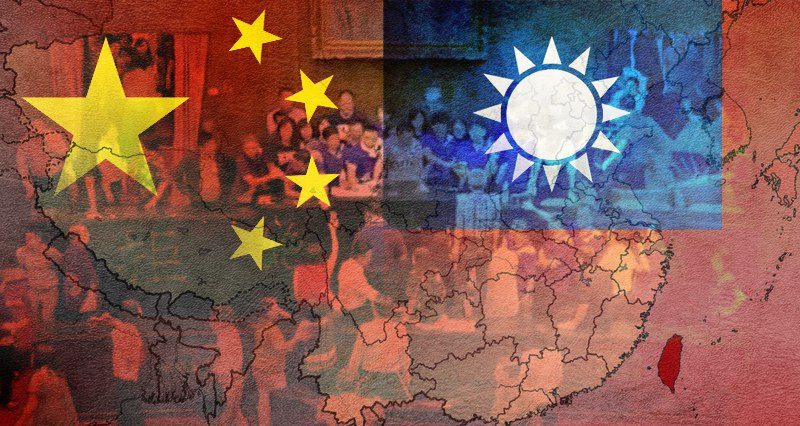

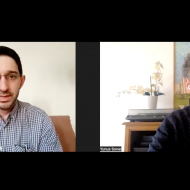
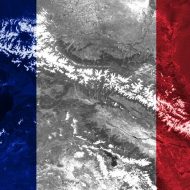
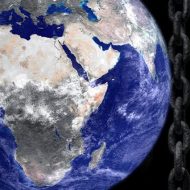


Leave a Reply